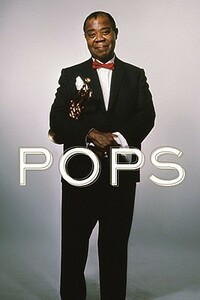Take a photo of a barcode or cover
Louis Armstrong is one of the legends of twentieth century music. During five decades as a performer he thrilled audiences with his cornet and trumpet virtuosity, while his gravelly voice made him one of the most popular and recognizable singers of his day. Such a career became the stuff of legend, making it difficult to discern the truth underneath. In this book, Terry Teachout undertakes the difficult task to sift though the legend to discover the man underneath.
In this he is aided by Armstrong, who left behind two autobiographies and numerous audio recordings. From them we learn a man unashamed of his impoverished beginnings in the "black Storyville" neighborhood of New Orleans. The musical scene of the town's brothels and clubs provided the young Armstrong with both his early musical education and his first employment. Teachout goes on to describe his journey during the 1920s from promising young cornet player into the headlining talent he became by the end of the decade. Teachout rightly gives this period, one that saw some of his most innovative music, considerable attention, but he challenges critics such as Gunther Schuller who dismiss Armstrong's work with the big bands of the 1930s and 1940s. These decades dominate the biography, taking up eight of the book's twelve chapters. The final chapters chronicle the established entertainer who faced the twin challenges of aging and the disdainful attitude of the younger generation of musicians who followed in his giant footsteps.
In examining Armstrong's life, Teachout brings to bear his skills as detective and storyteller. He succeeds in depicting a very human yet enormously gifted performer, a talented musician who was also a superb entertainer. His book easily supersedes earlier biographies of Armstrong in its thoroughness and readability, yet it remains frustratingly incomplete by itself. For while Teachout does an admirable job of describing Armstrong's music, the book really is best enjoyed when accompanied by the songs Teachout describes. Though the author identified thirty songs in an appendix that can be downloaded by the reader, the sheer amount of music he describes warrants more comprehensive collections. It is only when listening to them in conjunction with Teachout's book that the degree of Armstrong's achievement is best understood.
In this he is aided by Armstrong, who left behind two autobiographies and numerous audio recordings. From them we learn a man unashamed of his impoverished beginnings in the "black Storyville" neighborhood of New Orleans. The musical scene of the town's brothels and clubs provided the young Armstrong with both his early musical education and his first employment. Teachout goes on to describe his journey during the 1920s from promising young cornet player into the headlining talent he became by the end of the decade. Teachout rightly gives this period, one that saw some of his most innovative music, considerable attention, but he challenges critics such as Gunther Schuller who dismiss Armstrong's work with the big bands of the 1930s and 1940s. These decades dominate the biography, taking up eight of the book's twelve chapters. The final chapters chronicle the established entertainer who faced the twin challenges of aging and the disdainful attitude of the younger generation of musicians who followed in his giant footsteps.
In examining Armstrong's life, Teachout brings to bear his skills as detective and storyteller. He succeeds in depicting a very human yet enormously gifted performer, a talented musician who was also a superb entertainer. His book easily supersedes earlier biographies of Armstrong in its thoroughness and readability, yet it remains frustratingly incomplete by itself. For while Teachout does an admirable job of describing Armstrong's music, the book really is best enjoyed when accompanied by the songs Teachout describes. Though the author identified thirty songs in an appendix that can be downloaded by the reader, the sheer amount of music he describes warrants more comprehensive collections. It is only when listening to them in conjunction with Teachout's book that the degree of Armstrong's achievement is best understood.
